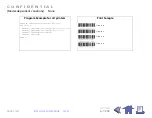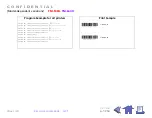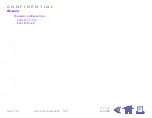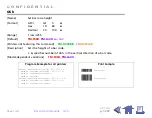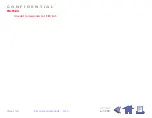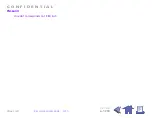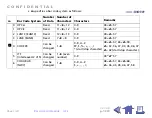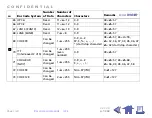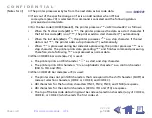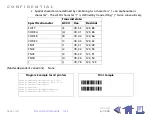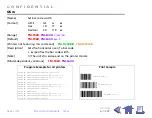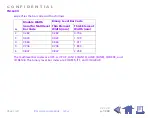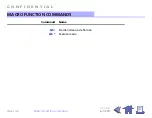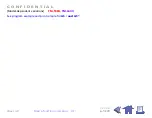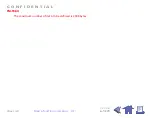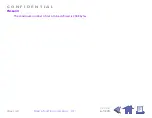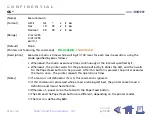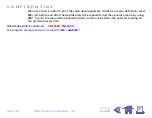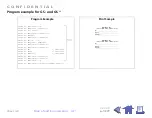
C O N F I D E N T I A L
Paper roll
Bar code commands GS k
Ver. 4.0
p. 1265
[Notes for
➁
]
■
The printer processes
n
bytes from the next data as bar code data.
■
If
n
is out of the specified range or if
n
is an odd number when ITF bar
code system (
m
= 70) is selected, this command is canceled and the following data is
processed as normal data.
■
For the bar code (CODE39 (
m
=69), the printer processes “
*
<ASCII code=42>” as follows:
•
When the first bar code (
d1
) is “
*
”, the printer processes the data as a start character. If
the first bar code (
d1
) is not “
*
”, the printer adds a start character (
*
) automatically.
•
When the last data (
dn
) is “
*
”, the printer processes “
*
” as a stop character. If the last
data is not “
*
”, the printer adds a stop character (
*
) automatically.
•
When “
*
” is processed during bar code data processing, the printer processes “
*
” as a
stop character. The printer prints data preceding “
*
” and finishes command processing.
Therefore, data following “
*
” are processed as normal data.
■
When CODE93 bar code (
m
= 72) is used:
•
The printer prints an HRI character "
" as start and stop character.
•
The printer prints HRI characters "
■
+ an alphabetic character" as a control character
(00H to 1FH and 7FH).
■
When CODE128 bar code (
m
= 73) is used:
•
The printer does not print HRI characters that correspond to the shift character (SHIFT) or
code set selection characters (CODE A, CODE B, and CODE C).
•
HRI characters for the function characters (FNC1, FNC2, FNC3, and FNC4) are spaces.
•
HRI characters for the control characters (00H to 1FH and 7FH) are spaces.
•
The top of the bar code data string must be code set selection character (any of CODE A,
CODE B, or CODE C) which selects the first code set.


